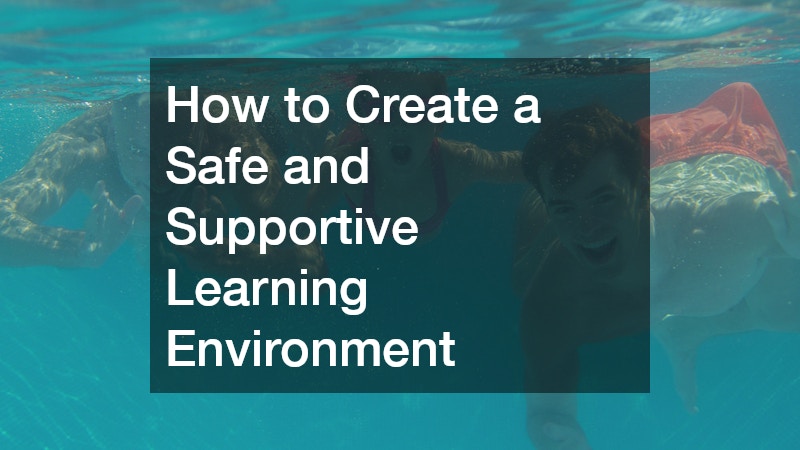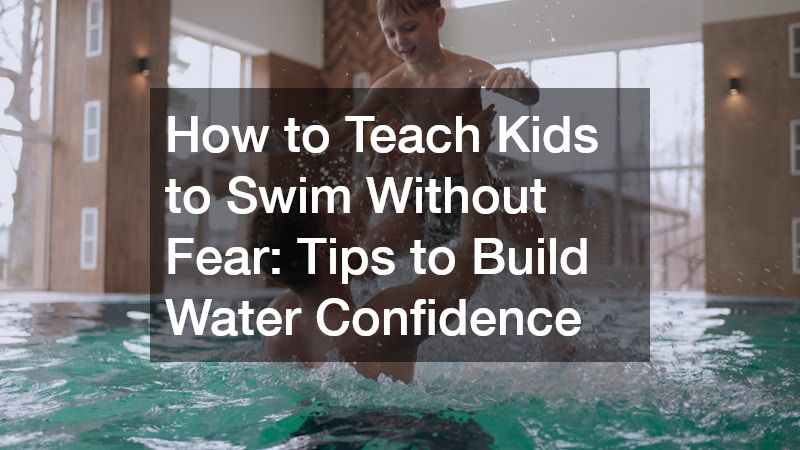
Learning how to swim is a valuable life skill for kids, but for many young learners, the water can initially feel intimidating or even frightening. Fear of swimming often stems from bad past experiences, sensory sensitivities, or simply unfamiliarity with water. As a parent or guardian, your approach to swim lessons can either nurture confidence or reinforce fear.
This guide is designed to help you gently and effectively teach your child to swim without fear. Through encouragement, safety, and smart strategies, you can turn anxiety into excitement and help your child become a confident swimmer.
Why Do Some Kids Fear the Water?
Many kids develop a fear of water for different reasons. Some have had negative experiences like swallowing water or slipping near a pool, while others might be reacting to loud environments, temperature sensitivity, or a fear of the unknown. Understanding the root of your child’s fear is the first step toward helping them overcome it.
Observe how your child reacts near water. Are they hesitant to enter the pool or bathtub? Do they become anxious when their face gets wet? Recognizing specific fears will help you tailor your teaching approach to their comfort level and build trust from the start.
How to Create a Safe and Supportive Learning Environment

When teaching kids how to swim without fear, your environment matters. A safe, calm, and welcoming setting is essential. Whether you’re in a public pool, a private swim school, or a backyard setup, make sure the surroundings are clean, quiet, and warm.
Try These Tips:
- Use a shallow pool or kiddie section so your child can stand comfortably.
- Check water temperature—cold water can increase anxiety.
- Limit distractions and noise so they can focus.
- Stay close at all times to provide reassurance and physical support.
Positive reinforcement goes a long way. Praise small achievements, offer high-fives, and avoid pressure. The more fun and safe they feel, the quicker they’ll build water confidence.
What Are the Best Techniques to Ease Water Anxiety?
Helping your child feel safe around water starts long before they attempt to swim laps. Use gradual exposure and play-based methods to create familiarity with water.
Try these gradual steps:
- Start with water play at home (in the bathtub or using a sprinkler).
- Introduce goggles and swimwear early so they become routine.
- Let them explore the water at their pace—splash, dip their toes, or blow bubbles.
- Practice floating with support, such as pool noodles or your arms.
- Model calm behavior—kids take cues from your confidence.
These techniques help remove the mystery around water. The more time they spend playing and laughing in shallow water, the more likely they are to relax during swim lessons.
How to Teach Kids to Swim Without Fear: Make It Fun and Familiar
When you’re focused on how to teach kids to swim without fear, remember—fun is your best teaching tool. Swimming should feel like play, not a chore. The more enjoyable you make it, the more open your child will be to learning how to swim.
Here are some playful teaching tips:
- Sing water songs like “Wheels on the Bus” with splash actions.
- Use toys (floating ducks, rings, balls) to distract from fear.
- Play follow-the-leader to encourage imitation and confidence.
- Celebrate every win, even putting their face in the water.
Also, give your child a sense of control. Let them decide when to go deeper or when to stop. This autonomy reduces pressure and increases trust in the process.
When Should You Get Professional Help?

Sometimes, a swim instructor can make all the difference. If your child continues to resist or panic despite your efforts, consider enrolling them in classes specifically designed for beginners or children with water anxiety.
Look for:
- Certified instructors who are patient and experienced with fearful kids.
- Small class sizes for more personal attention.
- Gentle swim programs that focus on water familiarity before technique.
Group settings can also help kids learn from their peers. Watching other children succeed may inspire them to try as well.
How Long Does It Take to Build Water Confidence?
Every child learns at their own pace. For some, confidence builds within a few sessions; for others, it can take weeks or even months. Consistency and patience are key.
Avoid comparing your child to others. Focus on progress, not perfection. Remember, mastering how to swim is less important in the beginning than building a positive relationship with water. With time and gentle encouragement, your child will learn to love the pool.
Final Thoughts: Encouragement Over Expectation
Teaching kids to swim without fear isn’t about rushing results—it’s about building trust, comfort, and joy in the water. Your patience, presence, and encouragement create the foundation for a lifetime of safe swimming.
By turning lessons into playful adventures, offering reassurance, and gradually increasing comfort levels, your child will grow from a tentative paddler to a confident swimmer.


